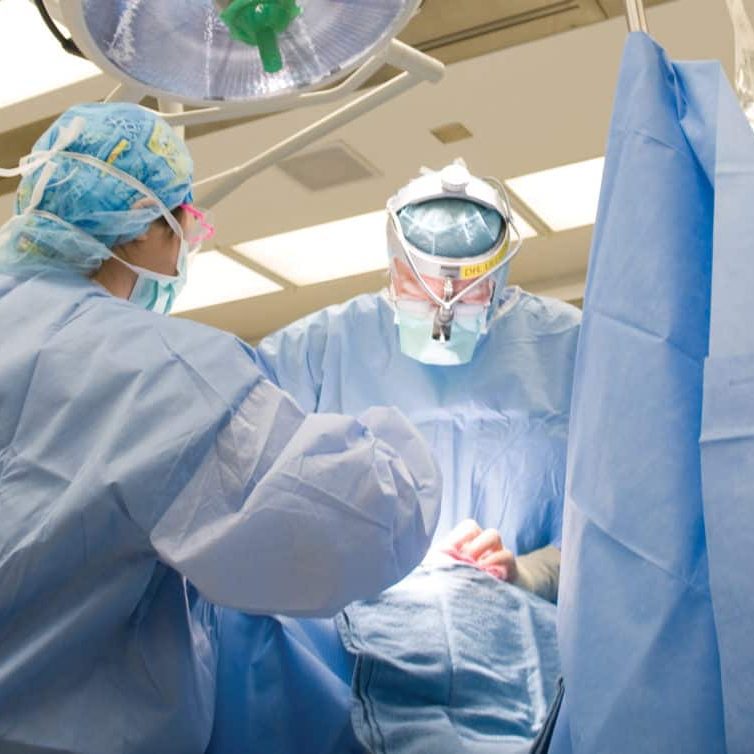
Urine Incontinence
Understanding urinary incontinence is an important first step in exploring the best treatment options for you.
Know the three types of incontinence
There are three primary types of incontinence. Your physician can discuss with you which type you have based on your symptoms.
Stress Incontinence
Stress urinary incontinence (SUI) results from a person’s exertion of physical stress or pressure, often from coughing, sneezing, lifting a heavy object or another physical activity. SUI does not result from mental or emotional stress. Stress urinary incontinence is often an uncommon result of prostate surgery.
Urge Incontinence
Overactive bladder (OAB) or urge incontinence symptoms include the frequent or overwhelming urge to urinate. Damage to the bladder’s nerves or the nervous system is one common cause; examples of such conditions are diabetes, multiple sclerosis, Parkinson’s or stroke. Some people also get bladder over activity from a diet, behavioral, or other causes unrelated to nerve damage.
Mixed Incontinence
This type of incontinence occurs with both physical stress and also urine leakage due to overactive bladder and urgency to urinate.
Causes of incontinence
There are a variety of causes of incontinence, and a careful assessment of the causes will help you find a treatment option the will improve your symptoms and enhance your quality of life. Common reasons for incontinence include:
- Diabetes
- Heart disease
- Prostate cancer treatment
- Side-effects of medications
- Urinary tract infections
Next Steps
Although there are many causes of incontinence, there are good treatment options available. Incontinence can impact self-esteem and your ability to enjoy an active lifestyle. At Hennepin Healthcare, our urology team has specialized expertise in managing incontinence and developing effective treatment plans.
Treatment Options
Our urologists can discuss with you a range of options that will be appropriate for your situation. Small adjustments to fluid intake and exercises are sometimes all that is needed. In other cases, non-surgical options like absorbent pads, urine collection devices, and penile clamps can be used.
If surgery is recommended, the two most common surgeries performed are:
- A male sling, in which a small piece of mesh is positioned to provide support to the urethra and surrounding tissue. This intervention helps keep the urethra closed when you are not urinating.
- An artificial sphincter is placed inside the body and keeps the urethra closed. A pump mechanism provides enough pressure to keep the urethra closed when not intentionally urinating.
Call 612-873-6963 to schedule an appointment with one of our urologists for an evaluation and discussion of the most appropriate options for your condition.
Urinary Incontinence Myths
Stress urinary incontinence (SUI) remains a sensitive topic that men don’t like to talk about. However, it shouldn’t go ignored because bladder leakage can have a significant impact on a man’s emotional health, social relationships and physical activity. In the interest of debunking myths about urinary incontinence, talk to your doctor about any urinary issues.
Sure, aging can increase the risk for incontinence, but many elderly individuals maintain normal bladder control. Instead, SUI is a common side effect of a urological procedure, pelvic trauma or condition affecting nerve functionality. Men may experience SUI after prostate cancer treatment and surgical treatment for an enlarged prostate (BPH). Studies suggest that as many as 50 percent of men report leakage immediately following surgery for prostate cancer and up to 16 percent of men will continue to have SUI one year after surgery.
There are three common types of urinary incontinence. The first being SUI, which occurs when physical movement or activity puts pressure on the bladder, such as coughing, laughing, sneezing or heavy lifting. The second is urge incontinence, also known as overactive bladder, which causes an overwhelming need to urinate that may prevent reaching the toilet in time. Lastly, mixed incontinence is present when a man suffers from symptoms of both SUI and urge incontinence.
Most cases of SUI can be cured or improved. It’s a matter of men speaking with their urology specialist about their symptoms. Absorbent products are probably the most well-known option out there. Other non-surgical options include a condom catheter that is placed on the penis so urine can flow into a drainage bag and a penile clamp, which controls leakage by applying constant pressure upon the penis. More long-term treatment options include an artificial urinary sphincter (AUS) and male sling. An AUS implant is completely concealed within the body and mimics a healthy sphincter, the muscle that controls urine flow. It allows the individual to urinate when desired. A male sling is placed within the body and acts as a hammock, repositioning the urethra and providing support to surrounding muscles to help restore normal bladder control.
Urinary incontinence is seen as being more common among women. However, this may be because men often go undiagnosed because they are more reluctant to discuss their symptoms with family members or doctors. The reality is that more than 1 out of every 10 men experience urinary leakage at some time in their lives.
Incontinence itself is not life-threatening, but it can be a very uncomfortable condition that can have a significant impact on a man’s emotional health, social relationships and physical activity. Often it can cause a man to isolate himself or limit his social life, especially exercise and leisure activities, which could lead to feelings of depression.
For some, absorbent products may be the best way to manage their condition. However, sometimes more than behavioral or nonsurgical treatments are needed to return to a normal life and regain confidence. I can’t emphasize this enough – men should speak with their doctor about their symptoms and ask questions about medications and procedures.
Sources
- Catalona WJ, Ramos CG, Carvalhal GF. Contemporary results of anatomic radical prostatectomy. CA Cancer J Clin. 1999 Sep-Oct;49(5):282-96.
- Ficarra V, Novara G, Rosen RC, et al. Systematic review and meta-analysis of studies reporting urinary continence recovery after robot-assisted radical prostatectomy. Eur Urol. 2012 Sep;62(3):405-17.
- AMS 800™ Urinary Control System Instructions for Use. American Medical Systems, Inc. 2016.
- Rehder P, Haab F, Cornu JN, et al. Treatment of postprostatectomy male urinary incontinence with the transobturator retroluminal repositioning sling suspension: 3-year follow-up. Eur Urol. 2012 Jul;62(1):140-5.
- Markland AD, Goode PS, Redden DT, et al. Prevalence of urinary incontinence in men: results from the national health and nutrition examination survey. J Urol. 2010 Sep;184(3):1022-7.


